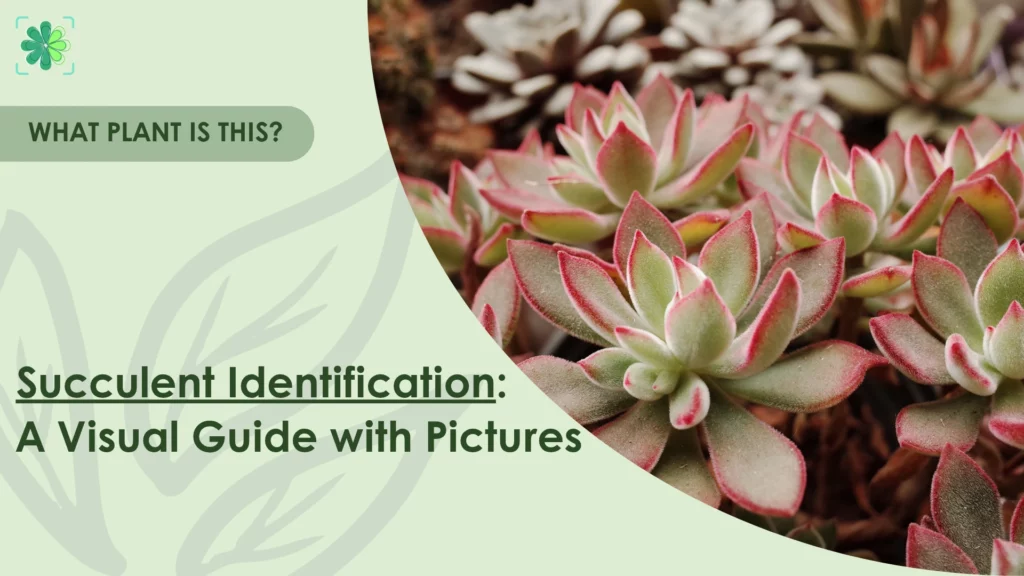
Succulents are among the most eye-catching and diverse plant families out there. But with so many types, from rosette-shaped Echeverias to trailing strings of Pearls, it’s easy to get lost. Whether you’re a hobbyist or a serious collector, accurate succulent identification helps with proper care, propagation, and even safety (yes, some succulents are toxic to pets!).
In this visual guide, we’ll walk you through how to identify succulents using photos, key features, and a handy succulent plant identification chart. Let’s break it down.
Why Identifying Your Succulent Matters?
You’ve just bought a gorgeous plant labeled “Succulent Mix” at the garden center. That’s cool, except now you have no idea if it prefers direct sun or shade, needs daily watering, or barely any at all. That’s the problem with vague labeling.
Here’s why proper succulent identification matters:
- Care requirements differ. Aloe vera thrives in full sun. Haworthia prefers indirect light.
- Some are toxic. Crassula (like Jade Plant) is toxic to cats and dogs.
- Propagation methods vary. Some grow from leaves (like Sedum), others from offsets or seeds.
- They might not even be succulents. Euphorbia resembles a cactus but is actually a distinct genus.
Understanding what you’re working with saves time, money, and a lot of unnecessary plant loss.
How to Identify Succulents by Visual Features?
Recognizing a succulent starts with observing specific traits that are unique to each genus or species. The key features to focus on are the leaves, growth habit, flowering behavior, and surface details. Let’s see in details below:
Start with the Leaves. Always.
Leaves are your best starting point. They’re the most visible and consistent part of a succulent year-round.
If the plant has flat, broad leaves forming a neat circle, chances are it’s from the Echeveria family. But if those rosettes are taller, with thicker, waxy leaves and a central “stem,” it might be an Aeonium instead. Minor detail — big difference.
Now touch the leaf. Is it coated in a soft, powdery layer? That’s called farina, and it’s common in many Echeveria and Dudleya species. Or is it fuzzy, like velvet? That’s a sign it may belong to the Kalanchoe group.
Color matters, too, but not in the way most people think. A pink or red hue often indicates stress, excessive sun exposure, or insufficient water. It helps you gauge the plant’s condition, but not necessarily its identity.
Observe the Way It Grows
Succulents don’t just differ in leaf shape. The way they grow and spread tells you even more.
Some, like Hens and Chicks, form little families. You’ll see a big mama rosette in the middle, surrounded by baby rosettes. Others keep growing taller. Crassula ovata (Jade Plant), for example, can look like a miniature tree if you let it.
If the plant spills over the edge of the pot like a waterfall, you’re probably dealing with a trailing type. Think String of Pearls, Burro’s Tail, or String of Bananas. Each of these has a unique leaf shape: round beads, overlapping leaves, or curved bananas.
Flowers Offer Helpful Clues
Succulent flowers are not always present, but when they bloom, they tell you a lot. Some species produce a long flower stalk from their center. Others bloom from the sides of the stem or at the tip.
If your plant sends up a tall, narrow stalk with a few bell-shaped flowers, it might be from the Echeveria family. If the flowers appear in clusters on the tip of a thick stem, especially in orange or red tones, you could be looking at an Aloe.
The shape, color, and location of the flower on the plant all help confirm your guess. Even the season it blooms can point you in the right direction.
Notice the Small Surface Details
This is where experienced growers really start to separate similar types.
Check the edges of the leaves. Are they smooth, lined with tiny teeth, or marked with soft ridges? Aloe and Agave can both look spiky at first, but Aloe tends to have softer, more flexible leaves. Agave often has a rigid, pointed tip and sharper edges.
Look closely for white dots, clear leaf tips, or repeating patterns. These details are common in plants like Haworthia and Gasteria. They may be small, but they can quickly rule out the wrong group.
Also, observe the stems. Is it thick and upright like a shrub, or soft and trailing? Does it branch or form a single central stalk? These traits, combined with the observations of the leaf and flower, help you narrow the field quickly.
Common Types of Succulents: A Visual Guide
There are hundreds of succulent varieties, but here are some of the most common ones you’ll likely come across. This section acts as a basic succulent identification chart, not exhaustive, but a helpful starting point.
Echeveria
- Shape: Rosette
- Leaf: Smooth, rounded, or pointed
- Color: Pale green, pink, lavender
- Growth: Compact
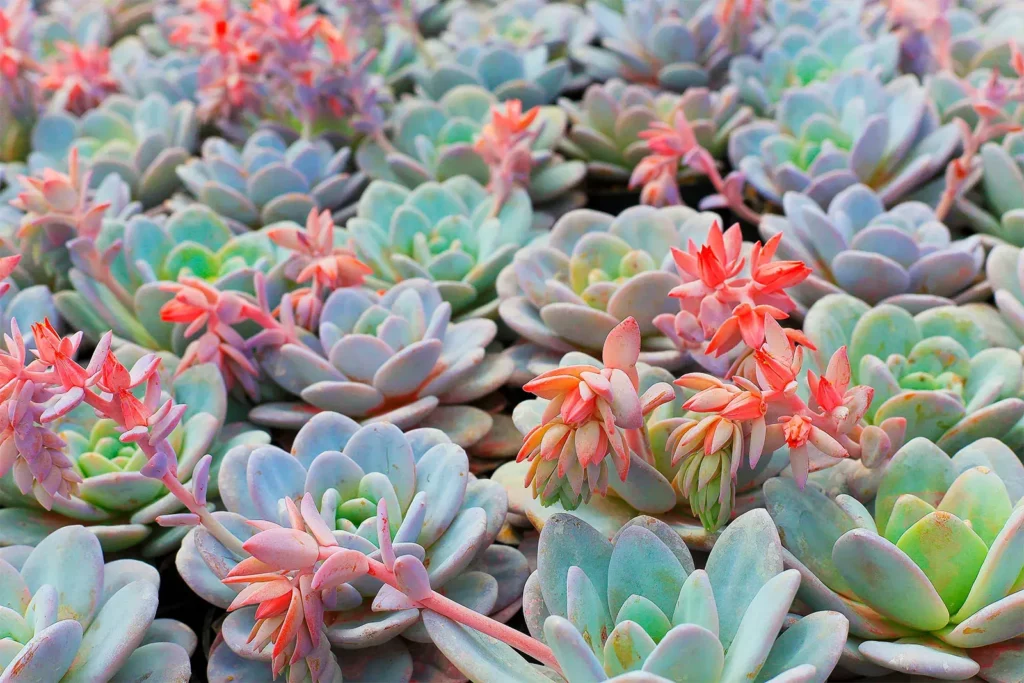
Often mistaken for roses, Echeverias are classic succulents that are frequently featured in arrangements. They’re a common choice for those exploring identification types of succulents, accompanied by pictures.
Sedum
- Shape: Clusters or spreading
- Leaf: Small, rounded, or cylindrical
- Color: Green, red-tipped, yellow-green
- Growth: Upright or trailing
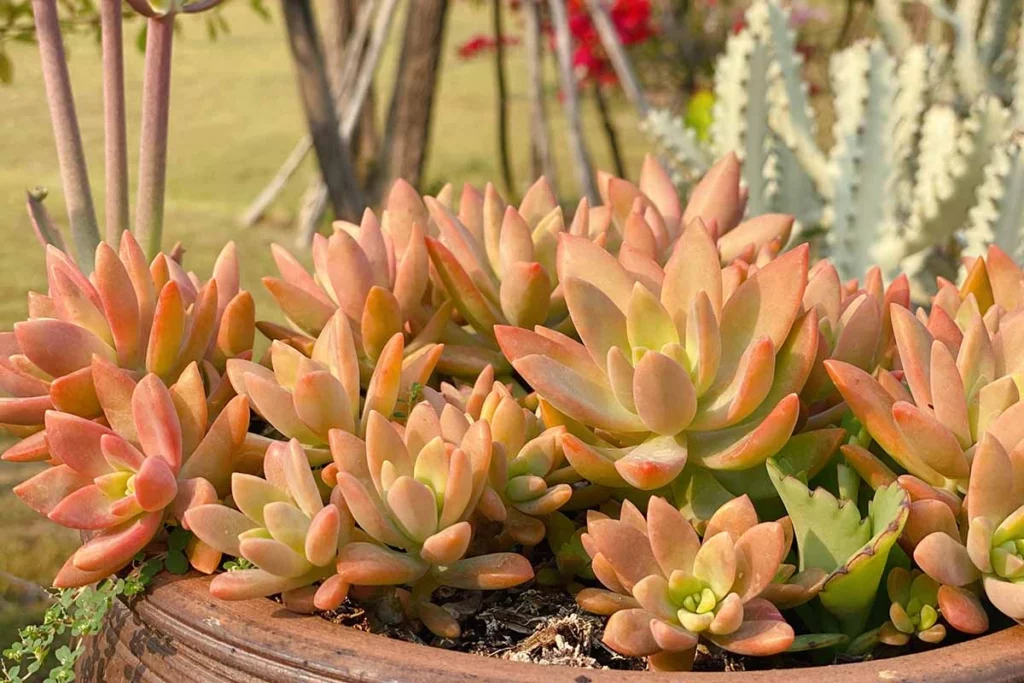
If you’re trying to do trailing succulent identification, Sedum is a common group to explore, as many species trail or spill over the edges of pots.
Haworthia
- Shape: Rosette or spiky
- Leaf: Firm, often striped or spotted
- Color: Deep green
- Growth: Small and compact
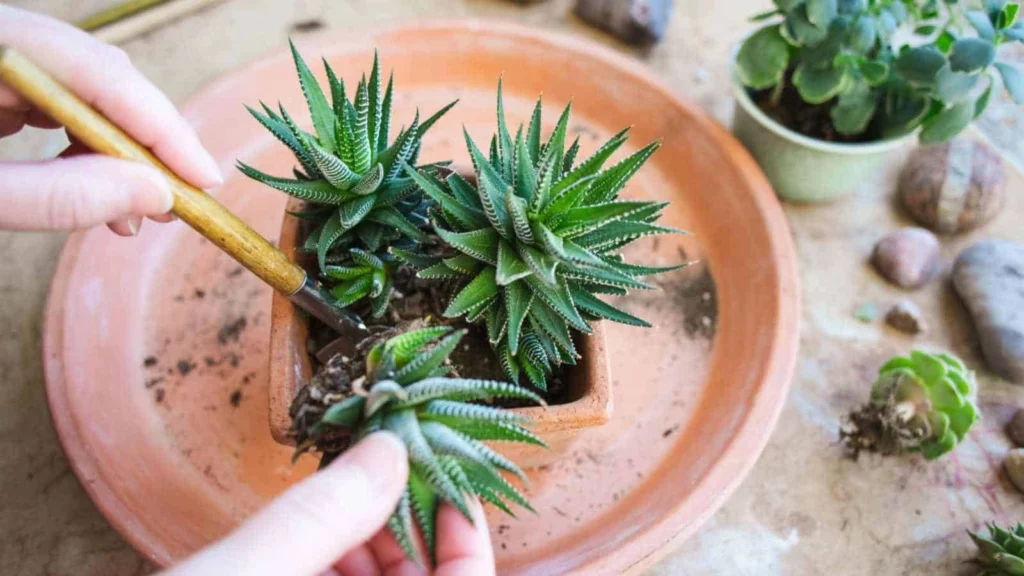
Crassula (Jade Plant)
- Shape: Shrubby
- Leaf: Thick, oval-shaped
- Color: Glossy green, sometimes red-edged
- Growth: Upright, tree-like with age
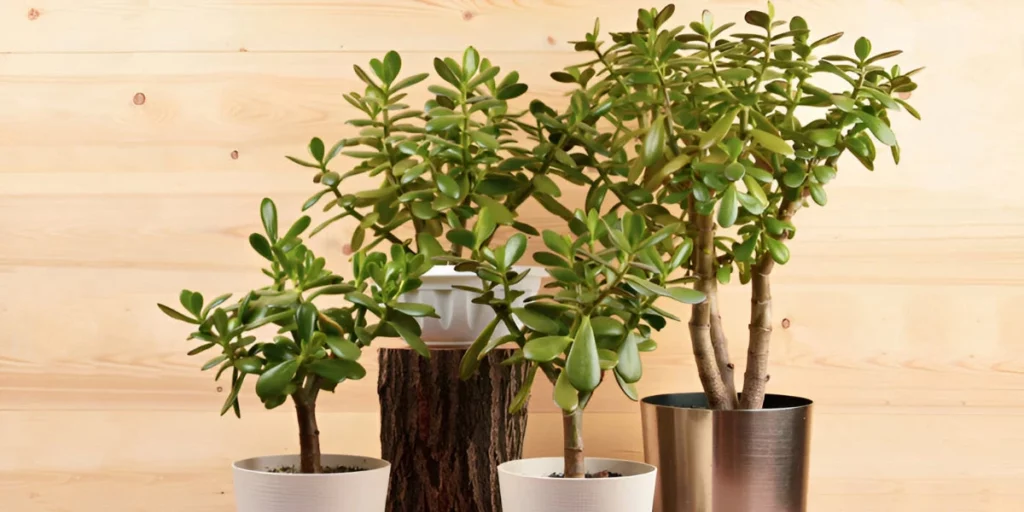
With their glossy leaves and branching growth, Jade Plants are among the easiest succulents to recognize, even as they mature into small, tree-like forms.
Aloe
- Shape: Upright and spiky
- Leaf: Thick, pointed, sometimes toothed
- Color: Green with white spots or streaks
- Growth: Clumping rosettes
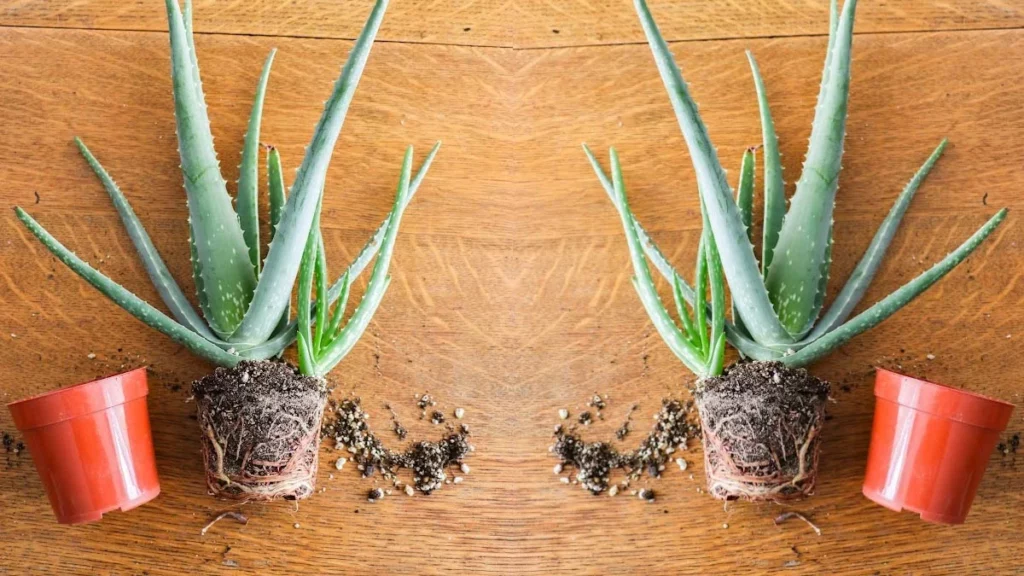
This is one of the more well-known species in spiky succulent identification. Aloe vera is a household favorite, but there are many other varieties available as well.
Graptopetalum / Graptosedum
- Shape: Rosette
- Leaf: Plump, dusty
- Color: Greyish blue, pink tones
- Growth: Rosettes on trailing stems
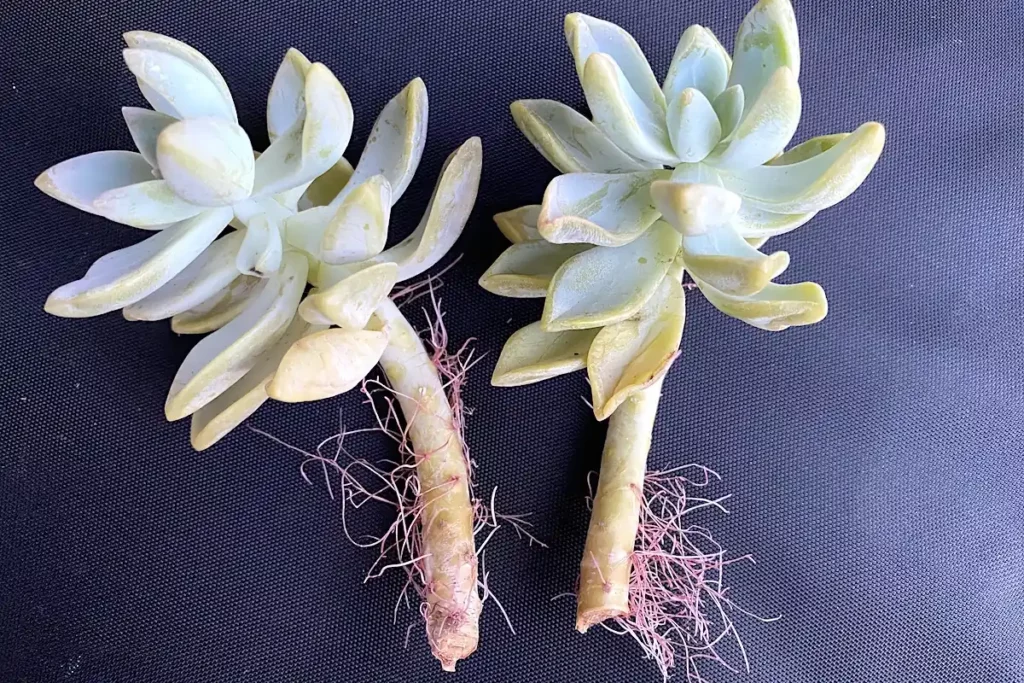
Lithops (Living Stones)
- Shape: Round, stone-like
- Leaf: Split in the center
- Color: Beige, grey, with markings
- Growth: Very compact
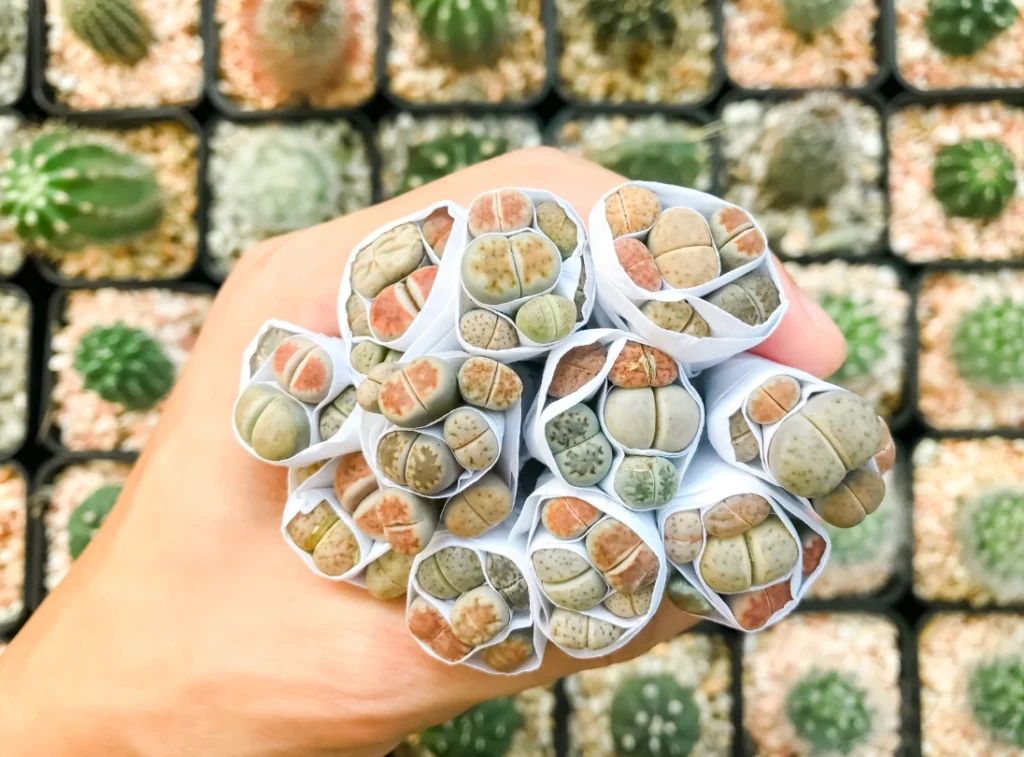
These are especially relevant for succulent seed identification, as their shape mimics small pebbles, making them hard to spot in the wild.
Visual Tools for Succulent Identification
Sometimes, words alone aren’t enough, especially when so many succulents look alike at first glance. That’s why you really need visual tools. Below are the 3 most reliable ones for you:
Use a Succulent Plant Identification Chart
This is the most beginner-friendly tool. These charts typically group succulents by features such as leaf shape, growth style (rosette, upright, or trailing), and color. Some also include side-by-side images of similar species so that you can compare subtle differences at a glance.
You can find printable versions online or in succulent care books, but many blogs and plant apps also offer interactive versions. They’re invaluable when you’re sorting through multiple plants at once or trying to ID a species with no flowers yet.
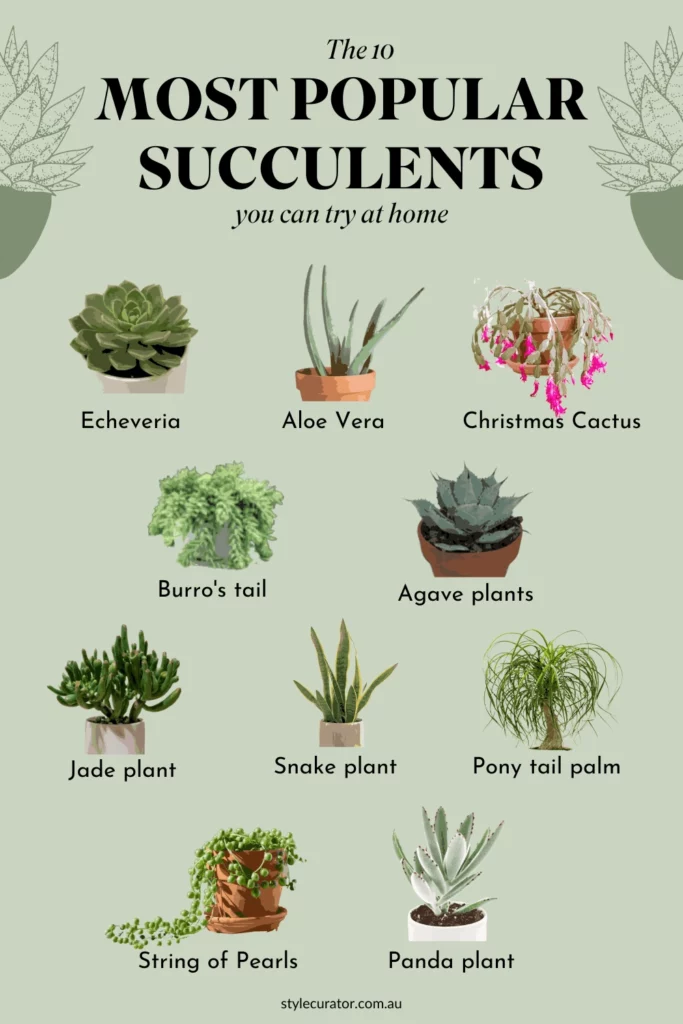
Try Photo-Based Identification Apps
One popular app, Google Lens, allows you to upload a photo and get instant suggestions based on visual matches. It’s quick but not always accurate. One common downside is that it sometimes pulls results from unrelated decorative plant images or mislabeled hybrids that look similar.
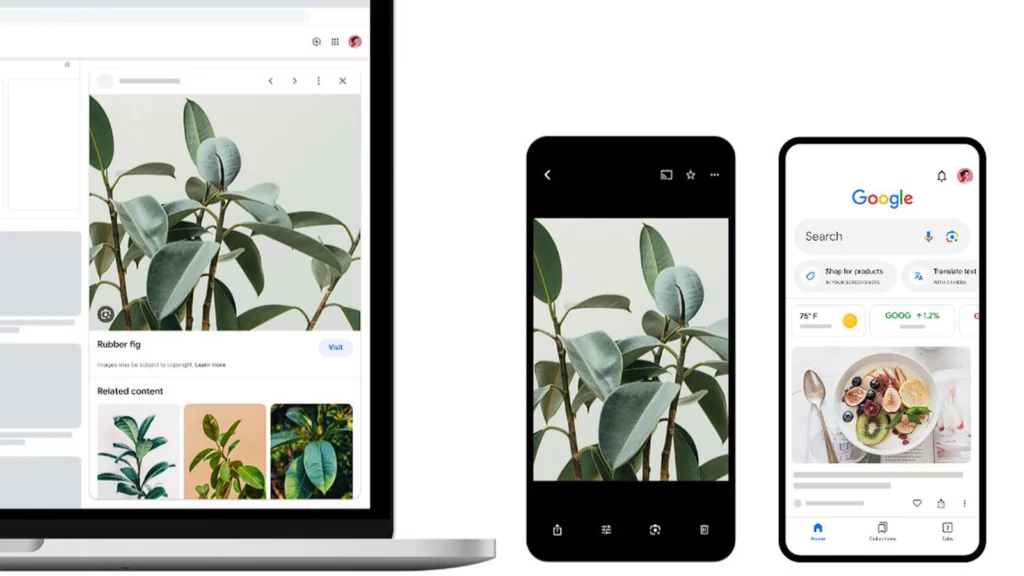
On the other hand, Planteyes is your best fit. You just need to snap a clear photo, and it compares your image to a database of succulent species. However, unlike general-purpose tools, it is designed with plant lovers in mind, so its matches tend to be more relevant and supported by detailed care information.
Tip:
If you’re using an app to help with succulent identification, try taking the photo in natural light with a plain background. That way, the algorithm isn’t distracted by pot shapes or shadows.
Compare Images from Trusted Sources
Don’t just rely on one photo or website. Search for multiple angles and stages of growth. A young Echeveria might look completely different from a mature one, and lighting can dramatically change a plant’s color.
Look for:
- Top view and side view photos
- Close-ups of leaf texture
- Pictures of flowers (if available)
- Notes on growth patterns (upright, trailing, clumping)
Common Mix-ups in Succulent Identification
Some succulents share similar shapes, colors, or textures, but they belong to different genera and require slightly different care. Let’s break down the most common mix-ups and how to tell them apart without relying on labels.
Echeveria, Graptopetalum, and Aeonium
At a glance, all three grow in a rosette shape, often with pastel-toned leaves. But their differences are easy to spot once you know where to look.
Echeveria tends to form tight, symmetrical rosettes that sit close to the soil. The leaves are thick, often coated in a powdery film, and usually feel firmer than they look. They rarely grow tall unless they’re stretching from a lack of light.
Graptopetalum has a softer, slightly looser structure. The leaves can look almost translucent in bright light and may fall off easily when touched. These plants are more likely to sprawl and spread along the soil.
Aeonium, in contrast, grows on a central stem. Its rosettes sit at the tips of tall branches, giving it a tree-like appearance. Leaves are thinner and often waxy, with a more delicate look. Many species go dormant in the summer, which surprises new growers when the plant stops growing and drops some of its leaves.
Crassula and Sedum
This pair is often confused because both have chunky, stacked leaves and compact growth habits.
Crassula plants, such as the Jade Plant, typically have thick, oval leaves arranged in opposite pairs. They grow upright and often develop woody stems as they age. The leaves feel smooth and sturdy, and the plant retains its shape well, even as it grows larger.
Sedum, on the other hand, is much more varied. Some species trail behind, while others remain close to the ground. Leaves are usually smaller and grow in tighter clusters. They often appear more delicate, and some have a soft, rounded look. Sedum also tends to be more cold-hardy than Crassula.
Aloe, Agave, and Haworthia
This is a tricky trio. They all have spiky, pointed leaves and grow in similar environments. But they come from different families and have key differences.
Aloe has fleshy, water-storing leaves that are usually lined with soft teeth. The leaves tend to be more flexible, and many varieties have white spots or streaks. Aloe is known for its gel, which is stored in the thick inner part of the leaf.
Agave is much stiffer. Its leaves often end in a sharp point and feel tough to the touch. Some have distinct ridges or a sharp spine at the tip. Agave grows more slowly and is usually monocarpic, meaning it flowers once and then dies.
Haworthia is the smallest of the three. It forms compact rosettes and often has white stripes, raised bumps, or translucent windows on the leaf tips. Its leaves are firm but not as thick as Aloe’s. Unlike Aloe or Agave, it’s more tolerant of low light and does well indoors.
Quick Guide to Telling Them Apart
| Group | Growth Form | Leaf Texture | Other Clues |
|---|---|---|---|
| Echeveria | Ground-level rosette | Firm, powdery | No central stem, symmetrical shape |
| Graptopetalum | Low rosette, spreads | Softer, pastel tones | Fragile leaves, often trails |
| Aeonium | Rosette on tall stem | Thin, smooth | Becomes tall, may go dormant in summer |
| Crassula | Upright, tree-like | Thick, smooth | Opposite leaf pairs, woody stems |
| Sedum | Clumping or trailing | Smaller, rounded | Dense clusters, cold-tolerant |
| Aloe | Clumping rosette | Fleshy, soft teeth | Contains inner gel, flexible |
| Agave | Stiff rosette | Hard, sharp tips | Monocarpic, very slow-growing |
| Haworthia | Compact, low rosette | Firm, textured | White stripes or “windows” on leaves |
Essential Tips for Succulent Identification
Sometimes, it’s not just about what you see, it’s about knowing how to look. Keep these tips in mind:
- Lighting can change leaf color. Some succulents blush under sunlight, which can confuse your identification. Compare photos in both sun and shade.
- Check the roots. Some succulents, such as Haworthia, grow offsets underground, while others, like Sedum, spread by means of shallow roots.
- Don’t trust size alone. Many succulents are slow growers. A tiny plant today might become huge in a few years.
- Avoid misidentification traps. Some plants like Euphorbia and Cactus look alike but belong to different families. Check if it produces sap (a sign of Euphorbia) versus spines from areoles (a cactus trait).
Conclusion
Succulent identification becomes much easier when you know what to look for: leaf shape, growth style, texture, and color all offer important clues. With tools like visual charts, apps, and some practice, anyone can learn to recognize common types with confidence. For even faster results, try the PlantEyes app to snap, search, and identify your succulents in seconds.
FAQs
How do I start with succulent identification if I know nothing about plants?
Begin by observing leaf shape, color, and growth pattern. Use this guide and compare your plant to online photos or a succulent identification chart.
What’s the best way to ID trailing succulents?
Look for hanging stems and check leaf type. For example, trailing succulent identification often includes plants like String of Pearls, Burro’s Tail, and Sedum morganianum.
Can I identify succulents by seeds?
Yes, but it’s tricky. Succulent seed identification usually requires experience or comparing the seed’s size, shape, and texture to reference photos.
Why do my succulents look different from photos online?
Lighting, age, soil, and even stress can change a plant’s appearance. Always check multiple photos before confirming an ID.


